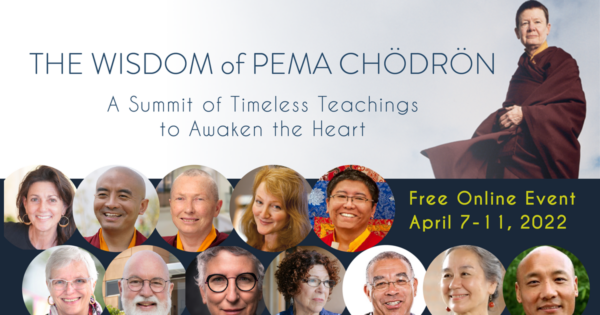I'm A Healthy Aging Expert: This Is The Biggest Myth About Longevity
How aging populations benefit society.


Our editors have independently chosen the products listed on this page. If you purchase something mentioned in this article, we may earn a small commission.
April 12, 2022 — 12:02 PM
Given our enduring fascination with living as long as possible, one might think that the widespread increase in longevity that our species has achieved would be cause for a correspondingly widespread celebration. This is far from the case, as we will later show.
An increase in life expectancy
Our life spans have effectively tripled from what was the normal lifespan throughout most of human history. In the last 120 years, we have added 30 years to life expectancy. As Robert Butler points out, “In fewer than 100 years, human beings made greater gains in life expectancy than the preceding 50 centuries.”
And there is no sign that this trend is leveling. Our steady increase in life span is in fact one of the most linear and consistent trends ever observed in nature. As demographers James Oeppen and James Vaupel point out, “In the last 160 years, there has been a steady rise of 3 months per year of life expectancy.”
Instead of viewing the global increase in longevity as the victory that humanity has dreamt of for thousands of years, it is largely portrayed as a natural disaster that will burden world populations. Since the 1980s, policymakers, journalists, and commentators have blamed countless economic problems on the expanding older population and raised alarms about impending national bankruptcies, when the real culprit was often rapidly growing economic disparities, with wealth concentrating generation by generation in fewer and fewer hands. (A term was recently coined—“centibillionaires”—to describe the new financial category, which includes Jeff Bezos and Elon Musk, whose net worth each topped one hundred billion.)
Older people are healthier and more vigorous than ever before, and disability and disease rates are going down.
The No.1 myth about longevity.
Even though there is a perception commonly presented in the media that increasing longevity will sap the public coffers and overfill our hospitals, growing evidence shows that increasing longevity is actually a harbinger of health and wealth. As Linda Fried, dean of the Columbia’s Mailman School of Public Health, aptly put it, “The only natural resource that’s actually increasing is the social capital of millions of more healthy and well-educated adults.”
“Social capital” is a broad term that refers to societal contributions generally, but the resources brought by longevity also include capital in the traditional financial sense. A study of 33 wealthy countries found that population aging correlated negatively with health expenditures. In other words, the older the population gets, the less its country will need to spend on health care.
Additionally, growing life spans lead to what Joseph Coughlin, of the MIT AgeLab, calls the “longevity economy.” Those over the age of 50 control 77% of the total net worth of U.S. households and spend more on travel, recreation, and personal-care products than any other age group, even though they only make up 32% of the population.
How aging populations benefit society.
They provide economic benefits
Far from being a drain on the economy, as negative age stereotypes misconstrue, older people are helping to drive it: the collective flow of private funds within families is much higher from older to younger relatives than the other way around. When you look at entrepreneurs, who are celebrated in the U.S. as modern heroes for creating new businesses and jobs, the successful ones are twice as likely to be over 50 than in their early 20s. And economists have found that for many countries increases in longevity lead to increases in gross domestic product. In Singapore, older parents often live with their poorest adult child so that they can best distribute their support. Researchers of this phenomenon found the older parents “cited the desire to experience the psychological gratification and the appreciation they derived from providing material support along with love and companionship.”
They provide health dividends
Contrary to the ageist myth that growing life spans are a catastrophe for our health systems, longevity actually provides significant health dividends. The myth is based on the pernicious stereotype that aging brings with it a range of inevitable physical and mental illnesses, accompanied by ballooning medical costs. But accumulating evidence suggests that as humans live longer, we are experiencing what the late James Fries, M.D., who taught medicine at Stanford, calls a “compression of morbidity,” or a growing number of years free of illness.
Health Coach Certification
A best-in-class, board certified curriculum grounded in a holistic approach to healing.

Common illnesses like heart disease and arthritis occur increasingly later in life. Today, people are two and a half times likelier than a century ago to enter their 60s without any chronic illnesses. Older people are healthier and more vigorous than ever before, and disability and disease rates are going down.
Thomas Perls, M.D., MPH who started and now oversees the world’s largest study of centenarians and their families, the New England Centenarian Study, is a friend from my postgraduate days at Harvard, when we shared an office suite in an old brick building above one of my favorite diners. We bonded quickly when I learned that he decided to become a geriatrician after reading Robert Butler’s seminal book on aging and ageism, Why Survive? Being Old in America.
In his groundbreaking work, Perls discovered a pattern that he hopes will refute the ageist idea that the older you get, the sicker you get. Instead, what he has found is that “the older you get, the healthier you have been.” He explains, “That’s what we’re seeing with the centenarians. To live to older ages, you can’t have been sick for a period of time. You have to age slowly or escape the age-related diseases.”
In one study, Perls found that 90% of centenarians were functionally independent in their 90s—meaning they lived their days without any help whatsoever. “The centenarians I have met with have with few exceptions reported that their 90s were essentially problem-free. As nonagenarians, many were employed, sexually active, and enjoyed the outdoors and the arts.”
Most supercentenarians (those over the age of 110) were living on their own at 100, and few had diabetes or vascular-related diseases, including hypertension. Similarly, in a recent study 330 Dutch centenarians demonstrated preserved abilities in a range of cognitive tasks including listing animals beginning with a certain letter and not getting distracted when working toward a goal.
Perls thinks that studying centenarians “will yield clues not so much about how to get people to extreme ages, but how to help them avoid or delay diseases like Alzheimer’s, strokes, heart diseases, and cancer.” People who live long lives, in other words, can teach us how to live healthy lives.
From BREAKING THE AGE CODE: How Your Beliefs About Aging Determine How Long and Well You Live by Becca Levy PhD, published by William Morrow. Copyright © 2022 by Becca Levy. Reprinted courtesy of HarperCollins Publishers.

 Tfoso
Tfoso 
































